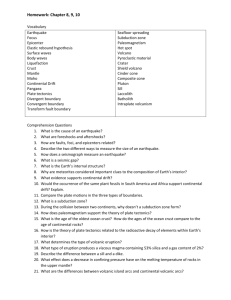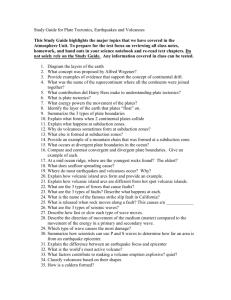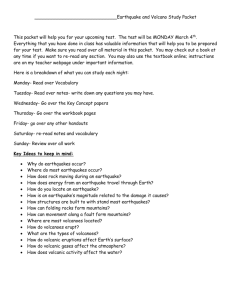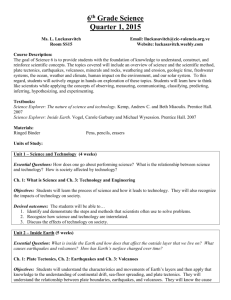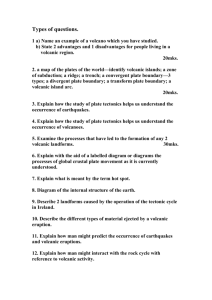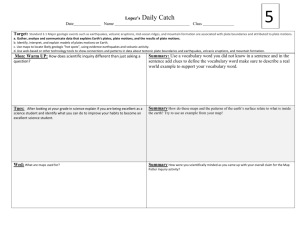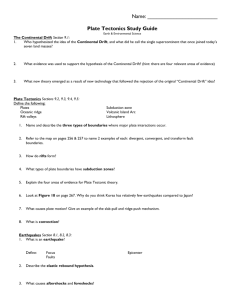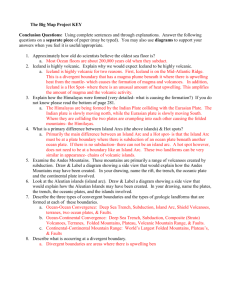Study Guide for Exam 2
advertisement
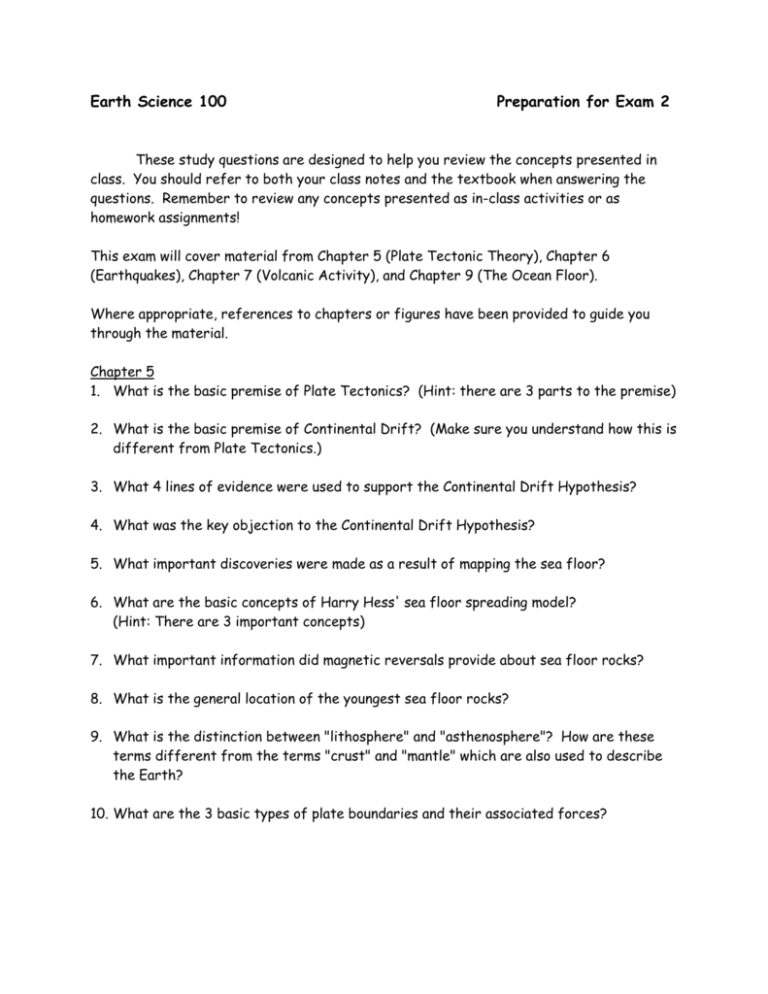
Earth Science 100 Preparation for Exam 2 These study questions are designed to help you review the concepts presented in class. You should refer to both your class notes and the textbook when answering the questions. Remember to review any concepts presented as in-class activities or as homework assignments! This exam will cover material from Chapter 5 (Plate Tectonic Theory), Chapter 6 (Earthquakes), Chapter 7 (Volcanic Activity), and Chapter 9 (The Ocean Floor). Where appropriate, references to chapters or figures have been provided to guide you through the material. Chapter 5 1. What is the basic premise of Plate Tectonics? (Hint: there are 3 parts to the premise) 2. What is the basic premise of Continental Drift? (Make sure you understand how this is different from Plate Tectonics.) 3. What 4 lines of evidence were used to support the Continental Drift Hypothesis? 4. What was the key objection to the Continental Drift Hypothesis? 5. What important discoveries were made as a result of mapping the sea floor? 6. What are the basic concepts of Harry Hess' sea floor spreading model? (Hint: There are 3 important concepts) 7. What important information did magnetic reversals provide about sea floor rocks? 8. What is the general location of the youngest sea floor rocks? 9. What is the distinction between "lithosphere" and "asthenosphere"? How are these terms different from the terms "crust" and "mantle" which are also used to describe the Earth? 10. What are the 3 basic types of plate boundaries and their associated forces? Chapter 6 1. What is the definition of an "earthquake"? 2. What is the difference between "focus" and "epicenter"? 3. Describe the Elastic Rebound Theory. 4. What is the difference between "surface" waves and "body" waves? 5. What is the difference between "P" waves and "S" waves? 6. How is "Intensity" used to describe the size of an earthquake? 7. What 4 factors affect the amount of damage caused by an earthquake? 8. How do "wave amplitude" and "energy" change with each unit of the Richter scale? 9. What are the 5 common hazards associated with earthquakes? 10. What kind of earthquake is most responsible for producing tsunami waves? 11. Is Southern California at risk for tsunamis? Chapter 7 – Basics of Volcanic Activity 1. What is "viscosity" and what role does it play in volcanic eruptions? 2. What 3 factors control the viscosity of magma? 3. What materials are associated with a volcanic eruption? 4. What are the 3 basic types of volcanic landforms and how are they different from each other? 5. What are some natural hazards associated with volcanoes? 6. Where are most of the world's active volcanoes located? 7. What are "hot spots" and how have they been used to test the Plate Tectonics model? Plate Tectonic Theory: An Explanation of Earthquake and Volcanic Activity and the Generation of Landforms Note: This section of material combines information from Chapters 5, 6, 7, and 9 1. What are the 3 ways that rocks may deform? 2. What is the general location of most divergent plate boundaries? 3. What kind of deformation is associated with divergent boundaries? 4. What is a "passive" continental margin? 5. Where can "rifting" occur? 6. What kind of volcanic activity is associated with divergence? 7. How does the volcanic activity affect the topography of the sea floor? 8. What is the difference between "subduction" and "collision"? 9. What kinds of deformation are associated with convergent boundaries? 10. What is the general location of most of the subduction zones? 11. How do earthquakes illustrate the subduction process? 12. What is an "active" continental margin? 13. Why are subduction zone volcanoes so violent? 14. What kind of deformation is associated with Transform Faults? 15. Is volcanic activity associated with Transform Faults? Why or why not?
